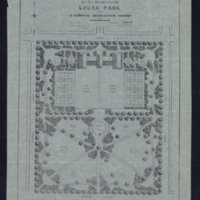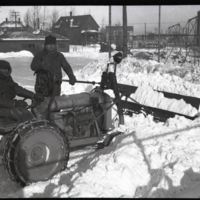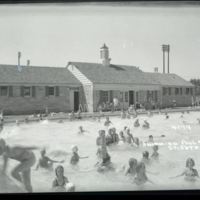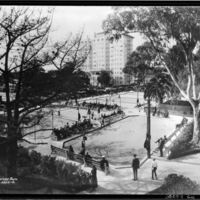Recreation Facilities
Park employees use a tractor plow to clear snow off the skating rink at Merritt Memorial Park in Duluth, Minnesota, 1929. Courtesy of the University of Minnesota Duluth, Northeast Minnesota Historical Center Collections via Minnesota Digital Library.
While many large city or cultural parks came to include areas for active recreational activities, neighborhood parks had a special focus on recreation and need for facilities to support them. Demand from park users for such facilities began to rise in many areas of the country in the 1920s and 1930s. Playground advocates had focused largely on the needs of children, but with the expansion in recreation programs, park administrators observed dramatic increases in adult participation in park activities.
Fields and courts for sports like tennis, baseball, and football were included in park plans to support informal play as well as organized league play. Many parks provided field houses or recreation buildings for indoor activities, and more specialized facilities for activities like horseshoes, shuffleboard, or croquet. Wading and swimming pools were also a popular recreation feature of municipal parks and some cities were able to build golf courses as part of their park system.






